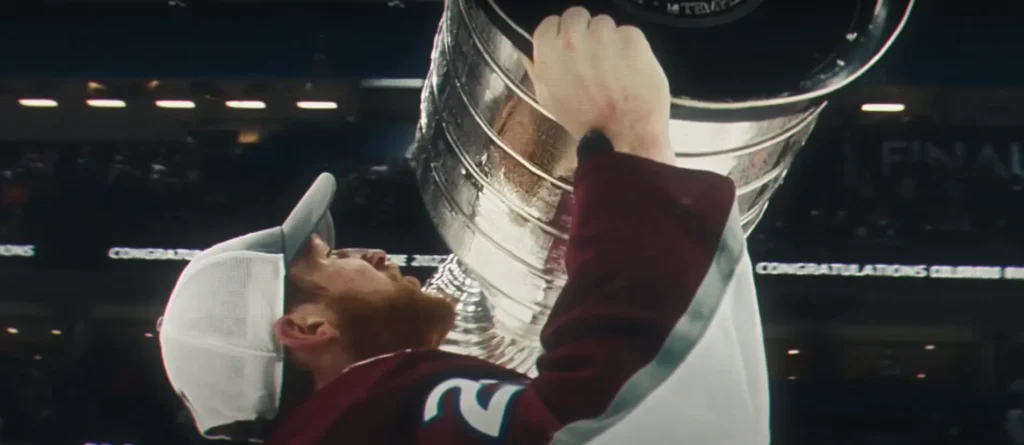Exploring the Hat Trick in Hockey
What is a hat trick in hockey?
A hat trick refers to the achievement of scoring three goals in a single game by a player. This exceptional feat is widely recognized by both fans and players as a significant accomplishment.
The game of hockey is packed with moments that thrill and engage the audience. Whether it’s a big save that lifts everyone off their seats, a spectacular pass that keeps viewers at home glued to the screen, or intense hits that energize the crowd, each play holds its charm.
Yet, the ultimate thrill in hockey lies in the scoring of goals. Among these, achieving a hat trick stands out as perhaps the most exhilarating moment, stirring more excitement than any other aspect of the game.
Does the Thrill of a Hat Trick Last?
Absolutely, the thrill of a hat trick can last beyond the game. When a player scores three goals in a single game, the timing—whether during regular play or in overtime—doesn’t diminish the excitement. This achievement adds a special thrill, enhancing the spectacle of the game, especially during overtime, delighting fans even further.
Record Holders for Most Hat Tricks in NHL
Unsurprisingly, Wayne Gretzky leads with the record for most hat tricks in NHL history, achieving this feat an impressive 50 times during his career. Close behind him is Mario Lemieux, who has 40 career hat tricks.
Alexander Ovechkin holds the top spot among active players with 30 hat tricks, doubling the count of any other current player. Fans in cities like Edmonton, Pittsburgh, and Washington have seen so many hats thrown onto the ice that it’s practically become a costly tradition.
Can Goalkeepers Achieve a Hat Trick?
No, goalkeepers cannot achieve a hat trick, as it specifically refers to scoring three goals in a game—an accolade reserved for outfield players. However, it’s noteworthy that a handful of goalkeepers have made history by scoring goals themselves, a rare and admirable accomplishment. Although a hat trick is beyond their reach, goalies can still have their own remarkable moments that distinguish them in the game.
Have Stars Achieved Hat Tricks in the Stanley Cup Final?
Indeed, the celebrated history of the Stanley Cup Final is filled with legends who have achieved hat tricks, leaving a lasting impression. Icons like Maurice Richard, Bobby Orr, and Wayne Gretzky have cemented their legacies on this prestigious platform with their remarkable goal-scoring feats, adding to the grandeur of the Stanley Cup Final.

Origins and Historical Moments of Hat Tricks
Did you know the concept of a hat trick originated in cricket? H.H. Stephenson, playing for an all-England team, was the first to achieve three consecutive wickets, marking the earliest known use of the term.
In hockey, the term hat trick also has a rich history. One famous story is about Alex Kaleta, a Chicago player in 1946, who couldn’t afford a fedora he liked at Sammy Taft’s shop. Taft promised him the hat for free if he scored three goals that evening.
Kaleta not only met this challenge but exceeded it by scoring four goals against the Toronto Maple Leafs. This event is believed by some to have popularized the term hat trick in hockey, although others argue it was already in use by the 1930s.
The first recorded hat trick in the NHL was by Harry Hyland in 1917, playing for the Montreal Wanderers against the Toronto Arenas in a game that ended 10–9. The fastest hat trick, achieved by Bill Mosienko in 1952, saw three goals in just 21 seconds, securing his spot in the NHL record books.
Moreover, the phenomenon of hat tricks has seen some unique instances, such as Alexei Yegorov, who scored all three of his career goals in a single game on February 20, 1996. The tradition of hat tricks continues to be a significant and exciting aspect of sports history.
How Common Are Hat Tricks in Hockey?
Hat tricks are not extremely rare but are definitely not a common occurrence in every game. They stand out as special and historic moments in hockey, celebrated by both players and fans.
The record for the most hat tricks in a single NHL season was established during the 2017-2018 season, with 81 hat tricks recorded in official games. This highlights their significance and rarity in the sport.
Different Types of Hat Tricks in Hockey
In hockey, there are several types of hat tricks that players can achieve, each with its unique charm and challenge:
Natural Hat Trick
A “natural” hat trick occurs when a player scores three goals consecutively within the same game, showcasing exceptional skill and timing.
Texas Hat Trick
Echoing the state’s reputation for grandeur, a “Texas” hat trick involves scoring four goals in a single game, exceeding the traditional three-goal achievement.
Gordie Howe Hat Trick
Named after the legendary Gordie Howe, this type of hat trick is particularly distinctive. To accomplish a Gordie Howe hat trick, a player must score a goal, provide an assist, and participate in a fight all within one game.
Read more: Mastering Cross Checking: Rules, Techniques & Safety in Hockey
Why Do Hockey Fans Throw Hats on the Ice?
The tradition of fans throwing hats onto the ice during a hockey game follows the completion of a hat trick, and it has a quaint origin. According to the Hockey Hall of Fame, the custom dates back to 1944.
That year, Alex Kaleta, a winger for the Chicago Blackhawks, reportedly couldn’t afford a hat while visiting Toronto. A local store owner promised him a free hat if he could score three goals in a game. Kaleta’s success not only won him a hat but also brought significant publicity to the store, which then continued the offer for any player achieving the feat.
The specific origins of fans throwing their hats are less clear. It’s believed to have started in Canada’s junior leagues, though pinpointing exactly where and when is challenging. Today, this gesture is a beloved part of hockey culture, celebrated when a player scores their third goal of the game, much to the delight of fans.

Do Hat Tricks Occur in Other Forms of Hockey?
Absolutely, the allure of hat tricks extends beyond traditional ice hockey to include variations like field hockey and roller hockey. The core concept is consistent: achieving three goals in one game is a remarkable feat that captivates fans across different hockey formats. This universal achievement transcends the specifics of each type, maintaining its magic and excitement in every arena.
Final Thoughts
Hat tricks in hockey are exceptional displays of skill and drama, lighting up the game with their swift and precise execution. In leagues like the NHL, a hat trick occurs roughly once every three games, highlighting it as a pinnacle of goal-scoring prowess, whether during the regular season or in nail-biting overtime scenarios.
Wayne Gretzky’s record-setting 50 hat tricks underscore their rarity and significance, solidifying their place in the annals of hockey history. These remarkable achievements are celebrated globally, especially during high-profile events like the Stanley Cup Final, where legendary players leave indelible marks with their performances.
The allure of hat tricks transcends traditional ice hockey, extending into other forms like field hockey and roller hockey. Scoring three goals in a single game is universally recognized as a significant accomplishment, capturing the extraordinary talent, iconic moments, and enduring magic that define the sport of hockey.
FAQ’s:
What is a hat trick in hockey?
In both field hockey and ice hockey, a hat trick is achieved when a player scores three goals in a single game. In ice hockey, this event is often celebrated by fans throwing hats onto the ice from the stands.
Why is 3 called a hat trick?
The term “hat trick” originated in British cricket, where a bowler who dismissed three batsmen with three consecutive balls was traditionally awarded a new hat by the club to celebrate this achievement. This concept has since been adopted in various sports to denote similar threefold accomplishments.
Are hat tricks rare in hockey?
Yes, hat tricks are indeed rare in hockey. For instance, Wayne Gretzky, often considered the best player ever, scored 50 regular-season hat tricks across his career, which only occurred in 3.4% of his games. Comparatively, a seasoned player like Claude Giroux, with 350 career goals, has achieved just one regular-season hat trick. This rarity underscores the difficulty of scoring three goals in a single game.
What are 5 goals in hockey called?
In hockey, scoring 5 goals in a single game is referred to as a glut.
How Many Hat Tricks Has Lionel Messi Scored?
Lionel Messi has achieved 57 hat tricks in his career, playing for both Barcelona and the Argentina national team. This places him among the most prolific goal scorers in the sport, though Cristiano Ronaldo holds the record for the most hat tricks by an active player.
What is offside in hockey?
Offside occurs when a player on the attacking team crosses the defending team’s blueline before the puck. The key factor is the position of the player’s skates; if both skates cross the blueline before the puck does, the play is ruled offside.



